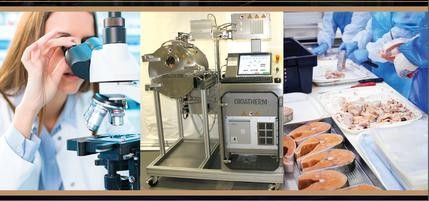Fish Processing Steps
Apr 29, 2019 • 290 views

1. Stunning -
The stunning of fish is the primary and maximum crucial step within the processing of fresh water and farmed fish because prolonged agony experienced by using the fish reasons the production of undesired substances in fish tissues.
Stunning of the fish produces enough moves to interrupt the vertebrae and rupture blood vessels. Red spots seem at the floor of the pores and skin and inside the muscle tissues close to the backbone.
2. Grading -
The 2nd step in fish processing is fish grading by using species and size. Grading of fish may be executed manually or by way of mechanical device. The mechanical grading is extra precise for fish before or after rigor mortis than forfish in a nation of rigor mortis. The computerized grading gadgets are 6-10 instances more green than manual grading . The basic benefits of the automatic machine are: low manufacturing charges.And improved quality of fish products on the stop of the processing chain .
3. Slime removal -
Slime elimination Fish secretes slime on its floor as a protection mechanism in opposition to harmful situations.
Anaerobic micro organism gift for the duration of fish processing can produce hydrogen sulfide by taking on sulfur compounds from the slime, skin and flesh . Therefore, the slime should be eliminated by means of continuous washing.
4. Scaling - The method of scaling is one of the hardest steps in fish processing and is extremely labour in depth. The scales may harbour bacterial pathogens and getting rid of them will hold the fish sparkling while refrigerated or frozen . The scaling may be completed manually with a difficult brush or scaling blades.
5. Washing -The number one aim of washing is to smooth and remove the amassed micro organism at the fish. The powerful washing of fish depends upon the fish:water ratio, the satisfactory of water and kinetic strength of the water movement. The recommended washing fish:water ratio is 1:1. However, the amount of water used will increase throughfold at some stage in processing. Use of potable water is usually recommended at some stage in freshwater fish processing.
6. Deheading -The fish head constitutes up to 20% of its weightand additionally it is taken into consideration as an inedible element . The fish may be deheaded manually or automatically. Manual reducing is easier for small fresh water fish. Larger fish ranging from 20-40 cm can be deheaded using mechanical gadgets. Fish may be cut in 3 unique approaches: round cut, directly reduce and contoured cut. In maximum fish flora, guide deheading is performed as it reasons minimal flesh loss.
7. Gutting -
Gutting of the fish is the removal of inner organs and optionally cleansing the frame hollow space of the peritoneum, kidney tissue and blood. In the gutting system, the fish is cut longitudinally to remove the inner organs on a desk made from special fabric which is easy to clean and does no longer soak up fluids. The internal organs constitutes around five-8% of the fish weight . The amount of waste within the gutting processing .
8. Cutting of fins -
Fins represent round 1-2% of the fish weight. The quantity of fin waste after fish processing . Fins are cut manually either by means of a knife or via mechanized rotating disc knives . This process is in most cases achieved after deheading and gutting. This method is hard for cutting larger fish. The mechanical knives are provided with a slit beginning in which the fins are reduce while the fish are surpassed through it manually .
9. Steaks and fillets -
Fillets are portions of meat containing most effective the dorsal and stomach muscular tissues. The fillets are processed manually or routinely. Manual filleting is completed in small sparkling water fish industries and mechanical filleting is used for processing marine fish. Deheaded complete fish are sliced into steaks through cutting perpendicular to the spine. Small and medium-sized fish are cut manually in a concave basin with frivolously-spaced slots to facilitate cutting. The average thickness of the fish portions is 2.5-4.5 cm. Large fish inclusive of cyprinids are sliced automatically due to their strong and large backbone. These pieces are greater popular inside the retail market and the canning enterprise . Once the fillet leaves the filleting stations, three products stay: napes, block and trimmed fillet. Napes are the thinnest a part of a fillet that protected the heart before the fish become gutted. Blocks are the components eliminated from fillets for cultured functions. Trimmed fillet is the final product in which the napes and pin bone attached to a few fillets can be eliminated .
10. Meat bone separation -
Around 30-50% of the meat is typically left alongside the ribs and backbone all through filleting. In smaller fish, the loss of meat is excessive and so minced fish meat is gaining greater attention . Minced fish meat also can be comprised of less treasured species after deheading and punctiliously removing their inner organs. In this manner, the meat is eliminated from skin, scales and bones through computerized separators. The fish travels alongside a conveyor belt which runs carefully to a perforated cylinder. The meat is squeezed through the holes due to the pressure applied from the conveyer belt and the bones are scraped away . The minced fish meat balance is plenty less than that of intact fish muscle and so it's far frozen immediately. It is used to produce fish burgers, fish sticks, canned fish, vegetable mixes and fish dumplings .
